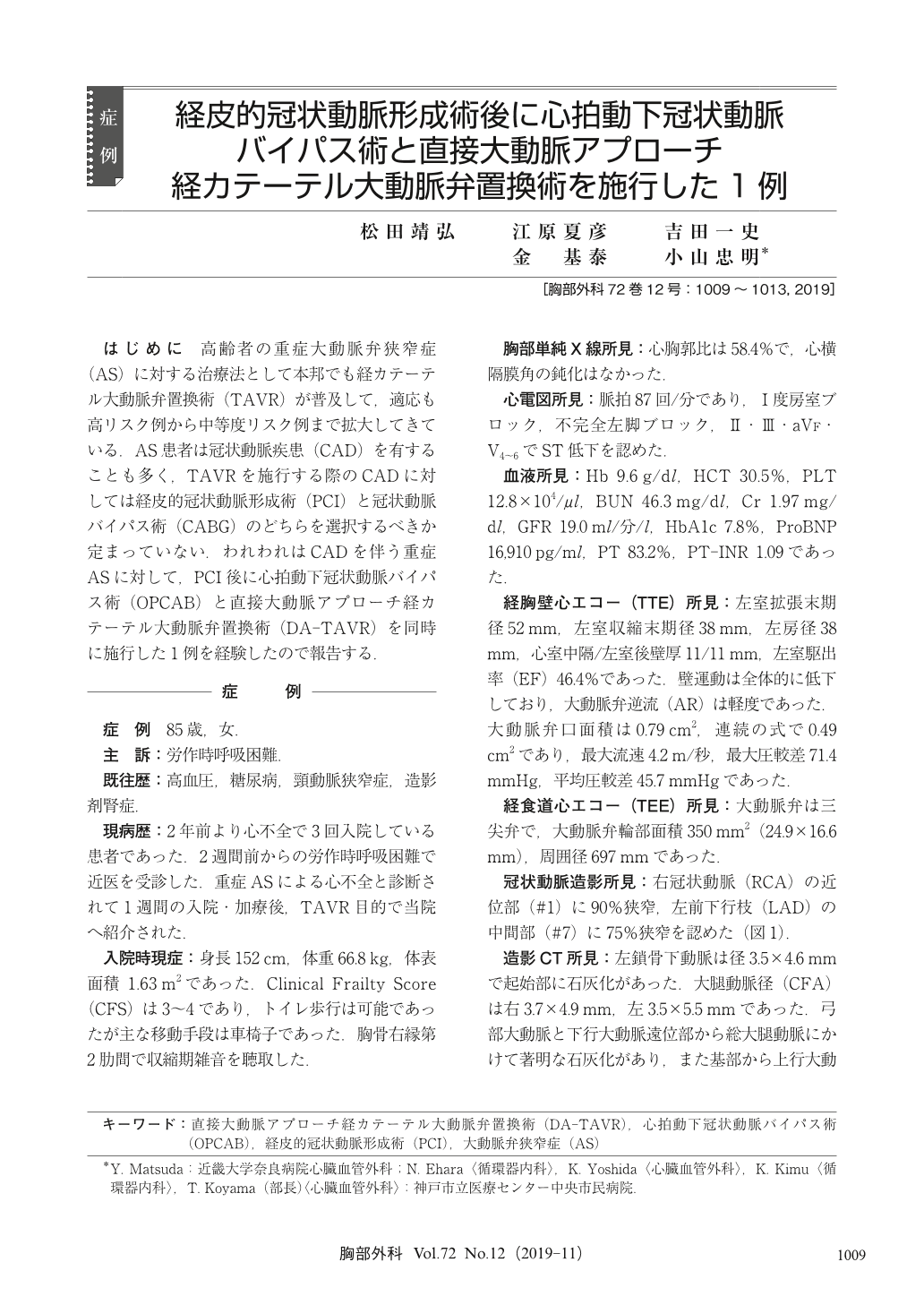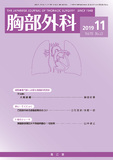Japanese
English
- 有料閲覧
- Abstract 文献概要
- 1ページ目 Look Inside
- 参考文献 Reference
はじめに 高齢者の重症大動脈弁狭窄症(AS)に対する治療法として本邦でも経カテーテル大動脈弁置換術(TAVR)が普及して,適応も高リスク例から中等度リスク例まで拡大してきている.AS患者は冠状動脈疾患(CAD)を有することも多く,TAVRを施行する際のCADに対しては経皮的冠状動脈形成術(PCI)と冠状動脈バイパス術(CABG)のどちらを選択するべきか定まっていない.われわれはCADを伴う重症ASに対して,PCI後に心拍動下冠状動脈バイパス術(OPCAB)と直接大動脈アプローチ経カテーテル大動脈弁置換術(DA-TAVR)を同時に施行した1例を経験したので報告する.
An 85-year-old woman with severe aortic stenosis (AS) and coronary artery disease (CAD) was admitted with heart failure 3 times. Direct aorta transcatheter aortic valve replacement (DA-TAVR) and off-pump coronary artery bypass grafting (OPCAB) were performed after percutaneous coronary intervention (PCI), and she was discharged without postoperative complication. Surgical aortic valve replacement and coronary artery bypass grafting (CABG) are recommended for a patient with AS and CAD. Recently, PCI or CABG with transcatheter aortic valve replacement (TAVR) has been reported, although there is no standard treatment for concomitant CAD in patients who undergo TAVR. DA-TAVR and OPCAB after PCI is considered as a reasonable treatment for high-risk patients.

© Nankodo Co., Ltd., 2019


